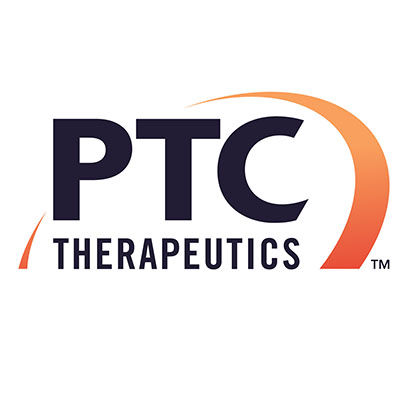预约演示
更新于:2025-05-07
Dysautonomia, Familial
家族性自主神经功能异常
更新于:2025-05-07
基本信息
别名 DYS、DYSAUTONOMIA, FAMILIAL、Dominant Hereditary Sensory Neuropathy, Type III + [60] |
简介 An autosomal disorder of the peripheral and autonomic nervous systems limited to individuals of Ashkenazic Jewish descent. Clinical manifestations are present at birth and include diminished lacrimation, defective thermoregulation, orthostatic hypotension (HYPOTENSION, ORTHOSTATIC), fixed pupils, excessive SWEATING, loss of pain and temperature sensation, and absent reflexes. Pathologic features include reduced numbers of small diameter peripheral nerve fibers and autonomic ganglion neurons. (From Adams et al., Principles of Neurology, 6th ed, p1348; Nat Genet 1993;4(2):160-4) |
关联
1
项与 家族性自主神经功能异常 相关的药物作用机制 ELP1基因调节剂 [+1] |
在研适应症 |
非在研适应症- |
最高研发阶段临床前 |
首次获批国家/地区- |
首次获批日期1800-01-20 |
15
项与 家族性自主神经功能异常 相关的临床试验NCT06148311
Dexmedetomidine Sublingual Film for the Ambulatory Treatment of Hyperadrenergic Autonomic Crisis in Patients With Familial Dysautonomia
The purpose of this placebo controlled interventional study is to collect preliminary data on administering dexmedetomidine in patients with Familial Dysautonomia (FD) during a rapid cessation of autonomic crisis. The primary aims are to assess the feasibility and evaluate if measurements of heart rate, blood pressure and oxygen saturation can predict the start of an autonomic crisis.
Funding Source- FDA OOPD
Funding Source- FDA OOPD
开始日期2024-07-01 |
申办/合作机构 |
NCT06128356
Pilot Study of Dexmedetomidine Sublingual Film for the Ambulatory Treatment of Hyperadrenergic Autonomic Crisis in Patients With Familial Dysautonomia
This is a pilot open-label study to evaluate the feasibility of conducting a clinical trial using sublingual dexmedetomidine sublingual film to treat hyperadrenergic autonomic crises in patients with Familial Dysautonomia at home. The primary aims are to examine the feasibility of performing a clinical trial using dexmedetomidine at home to terminate autonomic crisis, and refine the interventions and assessments used to evaluate autonomic crisis termination.
开始日期2024-06-01 |
申办/合作机构 |
ChiCTR2400083429
Effects of autonomic nervous function on hemodynamics during induction period of general anesthesia after COVID-19 infection: a single center, retrospective cohort study
开始日期2023-04-10 |
申办/合作机构 |
100 项与 家族性自主神经功能异常 相关的临床结果
登录后查看更多信息
100 项与 家族性自主神经功能异常 相关的转化医学
登录后查看更多信息
0 项与 家族性自主神经功能异常 相关的专利(医药)
登录后查看更多信息
1,080
项与 家族性自主神经功能异常 相关的文献(医药)2025-03-01·Acta Histochemica
Spatiotemporal distribution of Wnt signaling pathway markers in human congenital anomalies of kidney and urinary tract
Article
作者: Kelam, Nela ; Maglica, Mirko ; Perutina, Ilija ; Filipović, Natalija ; Prusac, Ivana Kuzmić ; Vukojević, Katarina ; Kablar, Boris ; Ghahrani, Nasrollah ; Mišković, Josip ; Bošnjak, Marko ; Rizikalo, Azer ; Racetin, Anita
2025-03-01·Surgery for Obesity and Related Diseases
Assessment of Obesity-related Metabolic Conditions: a novel objective scoring system better informs metabolic disease severity
Article
作者: Ahmed, Shushmita M. ; Ahmed, Shushmita ; Shamseddeen, Hazem N. ; Mostaedi, Rouzbeh ; Shamseddeen, Hazem N ; Ahmed, Shushmita M ; Arriola, John ; Akinjobi, Zainab ; Ali, Mohamed R. ; Ali, Mohamed R ; Shamseddeen, Hazem ; Lyo, Victoria
2025-02-01·European Journal of Medicinal Chemistry
Correction of aberrant splicing of ELP1 pre-mRNA by kinetin derivatives – A structure activity relationship study
Article
作者: Maková, Barbara ; Doležal, Karel ; Medvedíková, Martina ; Zatloukal, Marek ; Hönig, Martin ; Hajdúch, Marián ; Hořínková, Alena ; Voller, Jiří ; Oždian, Tomáš ; Mik, Václav ; Strnad, Miroslav ; Vojta, Petr ; Forejt, Kristýna ; Drašarová, Lenka ; Plíhalová, Lucie ; Lišková, Barbora
1
项与 家族性自主神经功能异常 相关的新闻(医药)2023-06-20
Scientists have written a review to discuss emerging research and evidence of the roles of alternative splicing defects in major neurodegenerative diseases. They also summarize the latest advances in RNA-based therapeutic strategies to target these disorders.
Alternative splicing, a clever way a cell generates many different variations of messenger RNAs -- single-stranded RNAs involved in protein synthesis -- and proteins from the same stretch of DNA, plays an important role in molecular biology. Progressing rapidly, the field of alternative splicing is a complex topic and the scientific literature on it is already extensive.
David Nikom, a student in the UC Riverside Neuroscience Graduate Program, and his advisor, Sika Zheng, an associate professor of biomedical sciences in the UCR School of Medicine and director of the Center for RNA Biology and Medicine, have written a review in Nature Reviews Neuroscience to discuss emerging research and evidence of the roles of alternative splicing defects in major neurodegenerative diseases. They also summarize the latest advances in RNA-based therapeutic strategies to target these disorders.
According to them, the topic of alternative splicing in neurodegenerative disease is particularly relevant in view of the increasing frequency of neurodegenerative disease worldwide and the urgent need for novel approaches for their treatment and management. They argue that since aberrant splicing dysregulation occurs commonly in neurodegenerative disease, the promise of using RNA therapies is important to understand and well-suited for a review.
Titled "Alternative Splicing in Neurodegenerative Disease and the Promise of RNA Therapies," their review aims at providing comprehensive, all-inclusive knowledge for a scientific audience interested in the topic. It synthesizes knowledge and discoveries from decades of research made by many labs worldwide on Alzheimer's disease, Parkinson's disease, Huntington's disease, ALS, frontal temporal dementia, etc. The work is supported by grants to Zheng from the National Institutes of Health.
In the following Q&A, Zheng and Nikom unpack key aspects of the review.
Q: What is alternative splicing dysregulation?
Once the DNA of a gene is transcribed into a pre-messenger RNA (RNA before it is spliced), only a small fraction of the pre-messenger RNA makes into the final messenger RNA, or mRNA, transcript that encodes protein. Alternative splicing is a process by which a cell can select which of those protein-coding parts to include in the resulting RNA or protein. Alternative splicing dysregulation is when this process goes wrong in some way. The cell chooses to include the wrong protein-coding parts or exclude some correct parts. This can cause all sorts of problems with the resulting protein: it could be shorter than it is supposed to be which would disrupt its normal function in the cell, or it could result in the protein not being produced at all.
Q: What role does alternative splicing play in molecular biology?
Alternative splicing greatly expands the diversity of the proteins that can be made from a single gene. This is important because multicellular organisms make so many different types of cells that compose the diverse tissue types of their body. But each cell only has the same genetic code. To produce the dazzling complexity of multicellular life, cells depend on alternative splicing to give them the flexibility to make large families of similar proteins with different tissue-specific and developmental stage-specific functions. For example, certain alternative splicing networks are only activated during embryonic development and get shut down when the organism matures.
Q: Briefly, how does it contribute to the molecular pathology of a wide range of neurodegenerative diseases?
Certain organs rely on alternative splicing to generate cellular diversity more than others. We don't know why for sure, but the brain has more alternative splicing going on than any other organ in the body. Scientists speculate this might be due to the brain's unique complexity, rapid evolution, or the extraordinary diversity of cell types it contains. What we do know is that there are a lot of brain-specific alternative splicing events that consistently go wrong in neurological diseases. These include neurodevelopmental disorders, like autism spectrum disorder, or neurodegenerative diseases, like Alzheimer's Disease or ALS. The best understood example we have so far has to do with dysregulated alternative splicing in ALS. Scientists found these erroneous splicing events lead to production of aberrant proteins or reduction of normal proteins, which ultimately affect neuronal health and function. Some other neurodegenerative diseases with dysregulated alternative splicing include frontotemporal dementia, Parkinson's disease, Familial dysautonomia, Huntington's disease, spinal muscular atrophy, and Duchenne muscular dystrophy.
Q: Does alternative splicing play a role in other diseases?
Alternative splicing has been linked to about 15% of human genetic diseases and cancers. Mutations in the components that regulate alternative splicing are causative for many diseases, both common and rare. Myotonic dystrophy, myelodysplastic syndromes (bone marrow cancers), retinal degenerative disorders like retinitis pigmentosa, and progeria (rare premature aging syndrome) are prominent examples of diseases caused by splicing defects.
Q: You conclude the review with the latest advances in RNA-based therapeutic strategies developed to target the underlying splicing mechanisms. What are some of these advances?
A good example of targeting underlying splicing mechanisms to treat diseases is with a disease called spinal muscular atrophy, a major genetic disease of children and infants. Humans carry two near identical copies of the Survival Motor Neuron gene: SMN1 and SMN2 which are essential for the survival of all animal cells. Patients with Spinal Muscular Atrophy have loss of SMN1; SMN2 is the only source of the SMN protein in patients. The critical difference between SMN1 and SMN2 is splicing of exon 7, a small fragment of protein-coding sequence within the SMN gene. Unlike SMN1 exon 7, SMN2 exon 7 is usually not included in most tissues. The exon 7-skipped transcript generated by SMN2 produces a partially functional and unstable protein. The first therapeutic approval for SMA targets the SMN2 pre-mRNA and binds to a region that is accessed by the splicing machinery to remove exon 7. This ultimately leads to blocking of the removal of exon 7 and promotes the formation of functional SMN protein. By promoting splicing of exon 7, this drug (Spinraza) increased SMN expression in the cell from the SMN2 gene, compensating for the loss of SMN1, and preventing the loss of cells in the central nervous system.
This story is a textbook example of a splicing mechanism that can be targeted to treat an otherwise fatal disease in children. The hope is to understand many more splicing mechanisms and find new ways to target them to treat other diseases.
Some of the latest advances:
寡核苷酸
分析
对领域进行一次全面的分析。
登录
或

生物医药百科问答
全新生物医药AI Agent 覆盖科研全链路,让突破性发现快人一步
立即开始免费试用!
智慧芽新药情报库是智慧芽专为生命科学人士构建的基于AI的创新药情报平台,助您全方位提升您的研发与决策效率。
立即开始数据试用!
智慧芽新药库数据也通过智慧芽数据服务平台,以API或者数据包形式对外开放,助您更加充分利用智慧芽新药情报信息。
生物序列数据库
生物药研发创新
免费使用
化学结构数据库
小分子化药研发创新
免费使用

